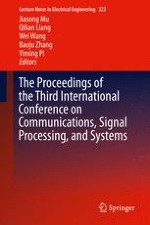2015 | Book
The Proceedings of the Third International Conference on Communications, Signal Processing, and Systems
Editors: Jiasong Mu, Qilian Liang, Wei Wang, Baoju Zhang, Yiming Pi
Publisher: Springer International Publishing
Book Series : Lecture Notes in Electrical Engineering
